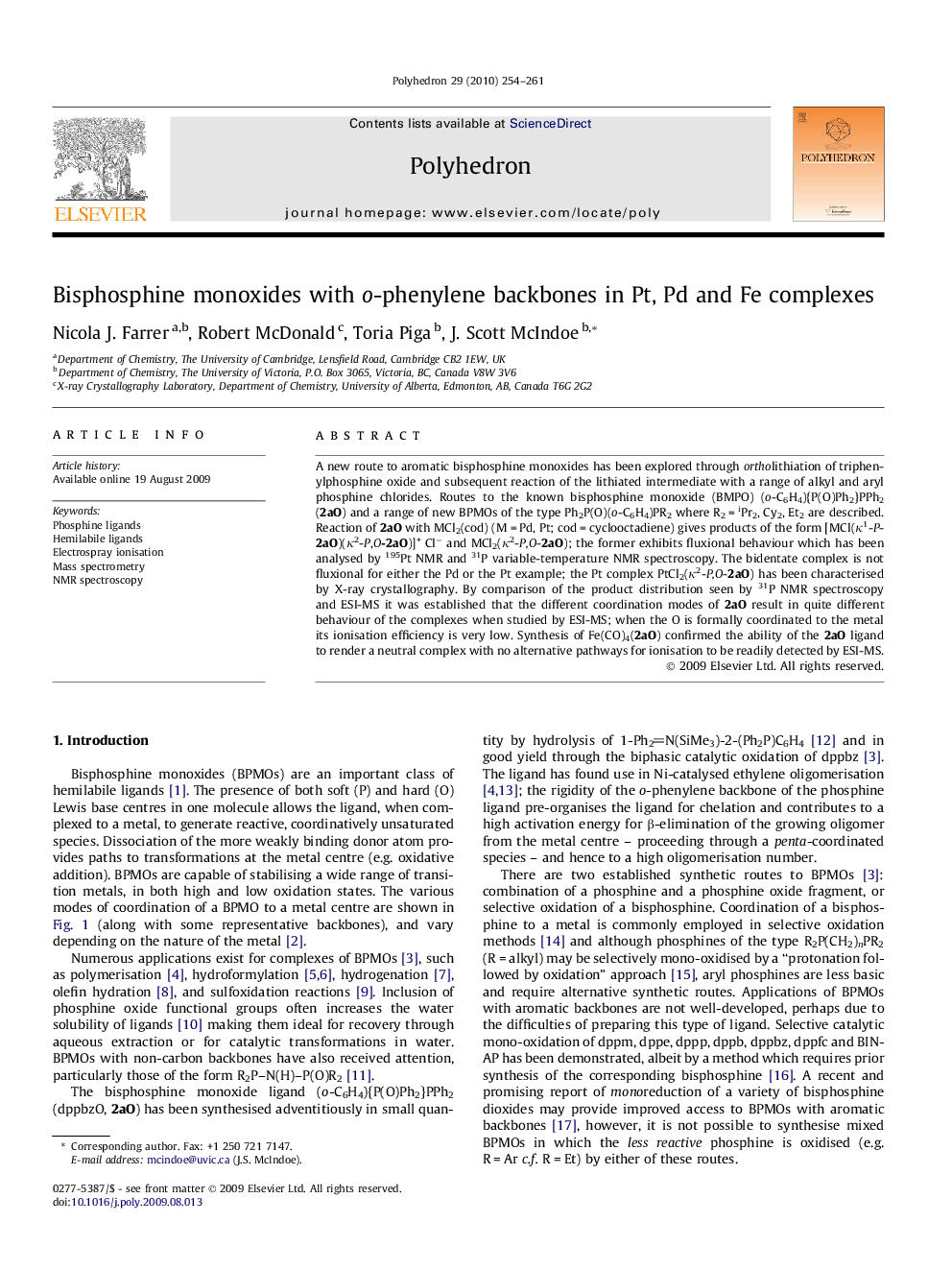| Article ID | Journal | Published Year | Pages | File Type |
|---|---|---|---|---|
| 1339505 | Polyhedron | 2010 | 8 Pages |
A new route to aromatic bisphosphine monoxides has been explored through ortholithiation of triphenylphosphine oxide and subsequent reaction of the lithiated intermediate with a range of alkyl and aryl phosphine chlorides. Routes to the known bisphosphine monoxide (BMPO) (o-C6H4){P(O)Ph2}PPh2 (2aO) and a range of new BPMOs of the type Ph2P(O)(o-C6H4)PR2 where R2 = iPr2, Cy2, Et2 are described. Reaction of 2aO with MCl2(cod) (M = Pd, Pt; cod = cyclooctadiene) gives products of the form [MCl(κ1-P-2aO)(κ2-P,O-2aO)]+ Cl− and MCl2(κ2-P,O-2aO); the former exhibits fluxional behaviour which has been analysed by 195Pt NMR and 31P variable-temperature NMR spectroscopy. The bidentate complex is not fluxional for either the Pd or the Pt example; the Pt complex PtCl2(κ2-P,O-2aO) has been characterised by X-ray crystallography. By comparison of the product distribution seen by 31P NMR spectroscopy and ESI-MS it was established that the different coordination modes of 2aO result in quite different behaviour of the complexes when studied by ESI-MS; when the O is formally coordinated to the metal its ionisation efficiency is very low. Synthesis of Fe(CO)4(2aO) confirmed the ability of the 2aO ligand to render a neutral complex with no alternative pathways for ionisation to be readily detected by ESI-MS.
Graphical abstractBisphosphine monoxide ligands may be prepared via treatment of ortholithiated triphenylphosphine oxide with a range of alkyl and aryl phosphine chlorides; the resulting hemilabile ligands render the complexes to which they are bound amenable to analysis by electrospray ionisation mass spectrometry when coordinated in κ1 fashion.Figure optionsDownload full-size imageDownload as PowerPoint slide
